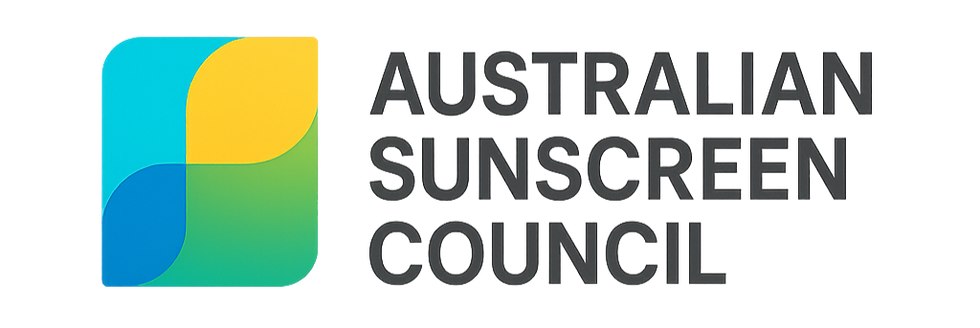Chemical UV Filters in Sunscreens and Breast Cancer Risk
- Australian Sunscreen Council

- Oct 4
- 3 min read
The Australian Sunscreen Council (ASC) is committed to sharing the latest scientific evidence about sunscreen ingredients so that Australians can make informed choices. Concerns have been raised internationally about whether certain chemical UV filters, widely used in sunscreens and personal care products, may influence the risk of breast cancer.
What the Science Shows
A 2017 study investigated six common chemical UV filters and found concerning effects in laboratory breast cancer models:
“Benzophenone (BP)-1, BP-2, BP-3 (Oxybenzone), octylmethoxycinnamate (OMC), 4-methylbenzilidenecamphor and homosalate are added to personal care products to absorb ultraviolet light. Their presence in human milk and their oestrogenic activity suggests a potential to influence breast cancer development. As metastatic tumour spread is the main cause of breast cancer mortality, we have investigated the effects of these compounds on migration and invasion of human breast cancer cell lines. Increased motility of oestrogen-responsive MCF-7 human breast cancer cells was observed after long-term exposure (>20 weeks) to each of the six compounds.” Breast Cancer Risk of Chemical …
These findings suggest that long-term exposure to certain chemical UV filters can increase cell motility and invasive properties—traits linked to cancer spread.

Professor Darbre’s Perspective
Professor Philippa Darbre, a leading researcher in oncology at the University of Reading, has investigated the presence of UV filters in human breast tissue. She explains:
“We found one or more UV filters were measurable in 84% of tissue samples—at least one breast region for 95% of the women. These UV filters have been shown to be oestrogenic, and their presence in human breast tissue suggests their potential to influence breast cancer development.”Breast Cancer Risk of Chemical …
She further warns:
“The problem is that UV filters are known to be endocrine disrupting chemicals or EDCs, which can mimic natural oestrogen found in our bodies. Lifetime exposure to oestrogen is an established risk factor for breast cancer.”Breast Cancer Risk of Chemical …
“At levels we recently detected in human breast tissue, BP-3, OMC, and 4-MBC can increase proliferation, migration and invasive properties of human breast cancer cells grown in cell culture. This implies a potential for these UV filters to increase tumour spread. This is especially relevant for breast cancer, where tumour spread is the main cause of mortality.”

Should We Avoid Sunscreens?
Professor Darbre emphasises a cautious approach:
“The oestrogenic activity of UV filters and their identification in breast tissue suggests they may have the potential to influence breast cancer development, so their regular use – from the application of a personal care product such as moisturiser or wearing impregnated clothing – should be avoided. … However, if you cannot cover up, you could consider using an old-fashioned zinc oxide-based sunscreen.”
ASC’s Position
The ASC acknowledges these findings raise valid concerns about the long-term safety of chemical UV filters. Our position is clear: the first line of defence against harmful UV radiation should always be physical protection methods rather than the application of sunscreen.
Australians should prioritise:
Clothing and hats that shield the skin.
Seeking shade during peak UV hours.
Adjusting outdoor activities to avoid excessive exposure.
Only when prolonged outdoor exposure cannot be avoided should Australians turn to sunscreen — and in those cases, mineral sunscreens (zinc oxide and titanium dioxide) are the preferred option. These provide broad-spectrum UV protection without systemic absorption or oestrogenic activity.
The ASC further calls for a regulatory re-evaluation of chemical UV filters in Australia, to ensure they are rigorously assessed in light of emerging evidence about their safety.
The presence of chemical UV filters in breast tissue, their oestrogen-mimicking properties, and evidence from laboratory studies collectively highlight a potential risk factor for breast cancer. Until more human-based research is available, Australians may choose to limit exposure by preferring mineral-based sunscreens and practising holistic sun safety.



Comments